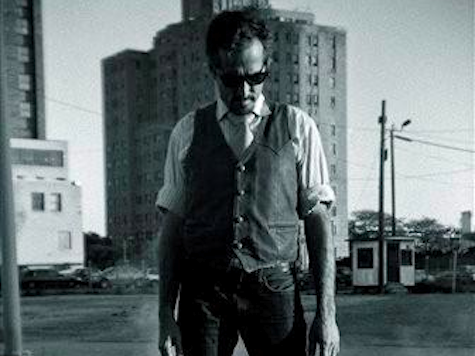WASHINGTON — “Go ahead and laugh at Detroit,” Charlie LeDuff sneers defiantly as the once-great metropolis teeters on the brink of collapse. “Because you are laughing at yourself.”
So begins LeDuff’s haunting, angry and deeply personal account of what is left of his hometown. The city was once heralded as “Paris of the Midwest” for its cosmopolitan luxuries, broad boulevards and sweeping views of the Detroit River. Yet it was quintessentially American because of its unstinting work ethic and tireless inventiveness.
Detroit gave birth to mass production, the automobile, the cement road, the refrigerator, frozen peas, high paying blue-collar jobs, home ownership and credit on a mass scale, LeDuff reminds us. “America’s way of life was built here.” It was also the last arsenal of Democracy on the planet fast enough, strong enough, rich enough and determined enough to stand up to fascism and stop its march across the globe.
Detroit: An American Autopsy captures the city today, sitting on the edge of modern civilization, slipping inexorably back into total chaos. Neglected streets have given way to craters and makeshift memorials to victims of murder. Entire blocks of homes have crumbled in upon themselves. Whole neighborhoods are engulfed in weeds and errant trees that now give cover to deer, wild chickens and wolves. Pheasants can be seen gliding between the high windows of once-grand skyscrapers downtown.
So much of LeDuff’s book reads like scenes out of MAD MAX where bands of criminals roam the streets and rule the night in the post-apocalyptic city. It is gritty like Eminem’s epic movie, 8 MILE. Only now, the beat has ceased. The music has stopped. LeDuff tells the story at sewer-level. He traces back the roots of the drifter whose body was found frozen in a block of ice at the bottom of an elevator shaft in an abandoned warehouse where hipsters sneak around on “urban adventures” and people play hockey around the man’s legs jutting up, frozen stiff, from the ice.
He tells of the madness of crack dens in abandoned homes that plague neighborhoods, where children get shot, girls are raped and lawlessness prevails. The city is too defunct to deal with the hulking structures. Sometimes in frustration, well-intended neighbors try burning them to the ground. But even this draws a new breed of preying criminal: Serial arsonists who just like to watch fire burn.
Then come the last sentries of defense in this blinking, flickering ember of civilization: men from the fire department in rickety, broken trucks. These men risk their lives — sometimes lose them — to save a lost city from that final plague of fire. LeDuff recounts the aching details of one firefighter who rushed into an abandoned house in search of life. But he is killed when the roof collapses on him. The house was empty.
LeDuff also tells unflinching tales of his own family, including the death of his sister, Nicole. A “streetwalker” and druggie, she is killed leaving a dive bar with a strange man when she leaps out of his speeding van and into a tree on the side of the street.
What makes the book work is LeDuff’s undiluted anger. His style is not taught in journalism schools. Which is why he is such an honest, powerful and relentless reporter. It is why his sources trust him. He is fearless and spares no one. Greedy Wall Street tycoons, union bosses, Big Three auto execs, corrupt politicians, lousy cops, LeDuff scorches everyone in his path with real and vivid tales of their dastardly deeds and ineptitude.
LeDuff even lets loose on his old editors at the NEW YORK TIMES, the nation’s paper of record that he quit in order to go home and work for a dying paper with one-tenth the circulation. After years covering terrorism, odd people and a career writing for the Grey Lady, LeDuff gave it all up to return to his childhood home on Joy Road on Detroit’s West Side. Named for the old railroad magnate James F. Joy, the road’s name becomes a twisted cruel joke in all the human misery.
LeDuff’s memoir is devoid of any petty, partisan slant. It is not a book about competing political philosophies. He is too good for that. And it would bore him, probably, anyway. Instead, this book is the story of a once-great city where people have quit working or cannot find jobs and the welfare bureaucracy has collapsed under the crushing weight of hopeless poverty and corruption. Not only is work scarce, it is belittled and derided.
LeDuff does not shy away from acrid race relations that dominate most treatments of Detroit. He gives the plight of blacks its fair due. But this story is about so much more than race. It is about a misery and devastation that transcends race. It is about forsaken humanity where people have lost not only a connection to work, but also the connections to all the people around them. It is about a government that destroys people and every one of those relationships.
Fifty years after the atom bomb, Hiroshima and Nagasaki are gleaming, thriving metropolises. After 50 years of failed government promises in Detroit, the money has dried up, welfare has run out and the city is headed for fire sale. With cities and states across the USA not far behind and teetering on the brink of bankruptcy, Detroit is no longer just a punch line. It is a warning of the future to come for millions of Americans.
Charles Hurt can be reached at charleshurt@live.com. Follow him at http://twitter.com/#!/CharlesHurt

COMMENTS
Please let us know if you're having issues with commenting.